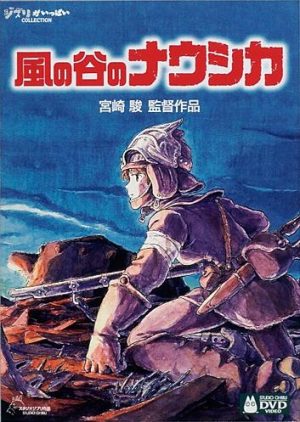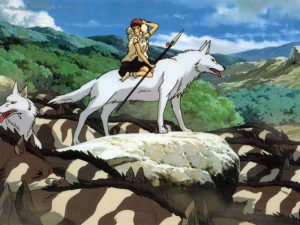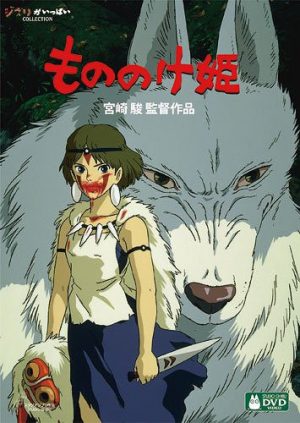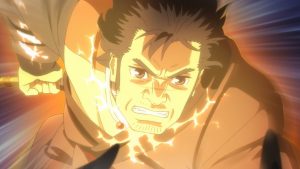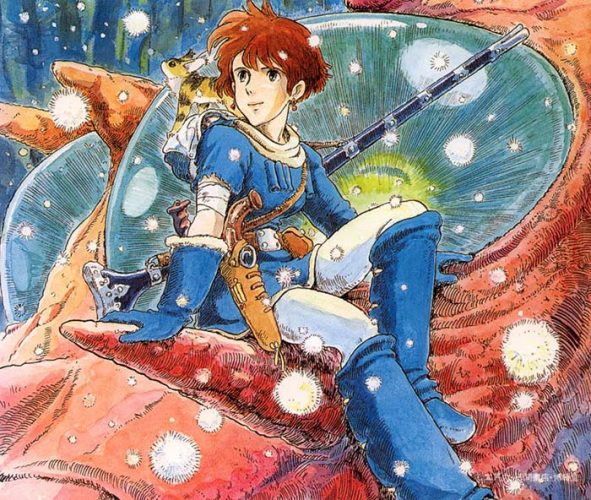
Every author wishes to create a story that can touch the heart of the masses. At its most basic level, they do it by creating an interesting story. A story that can make the viewers gasp in awe, hold back their tears, and laugh their guts out.
Another level beyond that is telling a story that is not only interesting but also has an important message embedded deep beneath the story. If succeeded, the viewers will leave the movie thinking about things that they never thought about before. If it failed, the movie ended up preaching its message to the viewers, which is a good way to make the people stop watching altogether. So as you can see, trying to create a story that is both interesting and make a statement at the same time is like walking on a tightrope.
One of the most important messages that tons of people have been trying to tell the global audience is about the environment and how we humans have basically done a terrible job at keeping it safe and healthy.
One of the most successful directors that manage to spread that message through his films is Hayao Miyazaki. He did it through two of the most influential anime movies ever made, the 1984 Nausicaä of the Valley of the Wind, and the 1997 Princess Mononoke. This brief article will examine how Miyazaki managed to accomplish such a feat.
The World of Kaze no Tani no Nausicaä (Nausicaä of the Valley of the Wind)
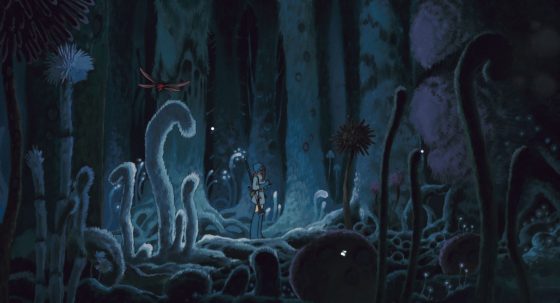
Nausicaä lives in a dystopian future where the majority of the earth’s surface has turned into a barren wasteland. Not only that, the devastating world war that happened thousands of years earlier has also created several large patches of forest filled with poisonous plants and mutated insects. This forest is called the Sea of Decay.
At first, people thought that the plants were the source of the problems. However, Nausicaä finds out that it is actually the land itself that has become so poisonous due to the biological warfare of the previous generations. It is actually the plants that absorb the toxin from the earth, ooze it out into the sky, and in the process, clean up the earth and the underground water system that the people in the region have been using for decades.
The World of Mononoke Hime (Princess Mononoke)
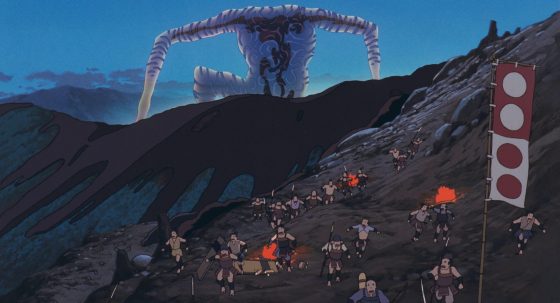
Princess Mononoke put more emphasis on the animals, but the fundamental problem is still about the forest. In the story, the people of a small, fortified, Iron Town are forced to destroy a large part of the forest because they need to mine the iron sand for their workshop.
Seeing their home being ravaged by the humans, the kings of the beasts in the forest choose to retaliate. Thus began a long and arduous back and forth attack between the people of the village and the forest beasts. Ironically, while both parties clearly stand on the opposite sides, they both are actually just trying their best to survive in this ever-changing world.
How Studio Ghibli Tell An Interesting Environmental Story
Though both movies deliver the story in a different way, with Nausicaä taking place after the environment has been badly damaged, while Mononoke takes place in the present time when the environment is being damaged, the message of the story remains the same. The damage done to the environment now will cause suffering to everybody and its effect will reverberate to future generations. Let’s see how Miyazaki managed to drive this message home while still delivering an interesting story at the same time.
1. The focus of the story is not on the environment
The damaged environment is an extremely crucial element in the story of both Nausicaä and Mononoke, but it is not the focus of the story. For Nausicaä, the main driving force of the story is the conflict between the people of the village in the Valley of the Wind with the armed invaders from the Kingdom of Tomelkia. For Mononoke, the story revolves around the conflict between the people of Iron Town and the beasts of the forest.
By letting the message of the environment take a step back, while at the same time putting a more exciting story about the conflicts of two opposing factions in the limelight, both stories manage to avoid preaching their message to their audience. On the contrary, the audience will focus their attention on the conflicts, while still keeping the importance of the environment to the story at the back of their mind.
2. Reveal the devastating effects caused by environmental damage
Although the main message will take a back seat for the majority of the story, the devastating effects caused by the damage to the environment need to be shown to the audience. Nausicaä shows it at the beginning of the movie when Lord Yupa goes through an abandoned town while Mononoke chooses to show it at a later part of the story when Ashitaka visits Iron Town and sees the burned forest.
In order for the audience to realize how dire the situation truly is, the movie needs to show the full extent of the damage to the environment. This is one of those instances of “Show, don’t tell”. Rather than the characters saying the environment has been badly damaged, the effect would be much stronger if the author simply showed it to the audience.
3. Presenting two opposing views
One of the most important things that Miyazaki has done in both movies is carefully present the case for each opposing faction. In doing so, the viewers can understand the motivation behind the action of each faction and the nuances of the problems that they are facing.
In Nausicaä, the people from the Kingdom of Tolmekia and Pejite wanted to burn down the Sea of Decay because they think it will remove the dangerous poisonous gas, and therefore let humanity live in peace. On the other hand, Nausicaä and the people who live in the Valley of the Wind know that despite its danger, the Sea of Decay is an important part of the world. That’s why rather than destroying it, they should respect it and learn more about it.
In Mononoke, the people of Iron Town are outcasts who can no longer live in any other place. The only way they can lead a decent life is by working together to craft the precious irons using the iron sand from the lake in the forest. As for the beasts, well, the forest is their home. To them, what humans do is invade and destroy their homes. Since negotiation between the two species is out of the question, conflict is the only solution left.
4. The main character stands in the middle
After making a strong case for each faction, the role of the main character is to stand firm in the middle. This is important because both parties have valid reasons to do what they did, so choosing one side over the other is akin to judging the other party, which once again leads to preaching to the audience. After all, the point of the movie is to understand the position of the other and potentially change their mind.
Nausicaä certainly fights for her people, but she still tries to understand her enemy at the same time. Ashitaka from Mononoke is basically in the same position. As a matter of fact, his main mission in the story is to see things with “Unclouded eyes”. Sure, they won’t hesitate to put up a fight when necessary, but they both know that doing so will only further fan the flame of hatred on either side. By being open-minded, the main characters become a gateway for the viewers into the world of both factions.
5. Those who side with the environment win in the end
We’ve already seen the devastating effect caused by the environmental damage, and we’ve seen the views from the opposing parties through the eyes of the open-minded characters. So now the time has come to choose a side and make a statement. After all, the message is to save the environment, right? So the movie has to end with that message front and center.
In Nausicaä, after spending some time with Nausicaä and witnessing her sacrifice to save not only her people and the Tolmekian, but also to calm the giant insects down, the leader of the Tolmekian army is finally willing to hear Nausicaä’s proposal and abandon her original plan.
In Mononoke, after seeing the devastating havoc caused by the angry Forest God, which is due to humanity’s selfish act, the leader of Iron Town finally comes to terms with the errors of her way. In the end, she intends to rebuild their destroyed town and tries to live side by side with the forest dwellers.
Final Thoughts
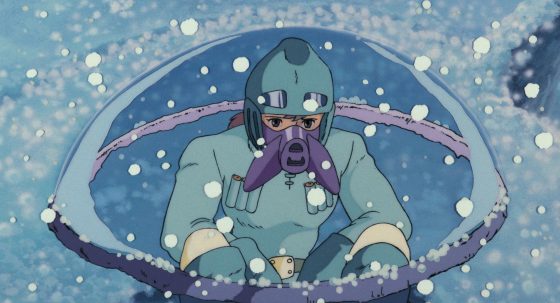
Crafting an interesting movie that has a strong environmental message behind it, or any important message for that matter, is an incredibly hard thing to do. And yet Hayao Miyazaki managed to create two of those a couple of decades ago. This analysis may only scratch the surface of what he has done with those two seminal works, but at the very least it can serve as a way for our fellow anime lovers to see some of the secrets behind the magic of these two beautiful stories.
Have you watched both Nausicaä of the Valley of the Wind and Princess Mononoke? Do you know any other anime that manages to achieve the same effect as these two movies? Let us know in the comment section below.
Recommended Post
Here’s Why You NEED to Watch Mononoke Hime (Princess Mononoke)!
Recommended Post
The Ambiguity Behind Princess Mononoke
Recommended Post
5 Reasons Why Ashitaka and San from Princess Mononoke are the Ultimate Heroic Couple
Recommended Post


